
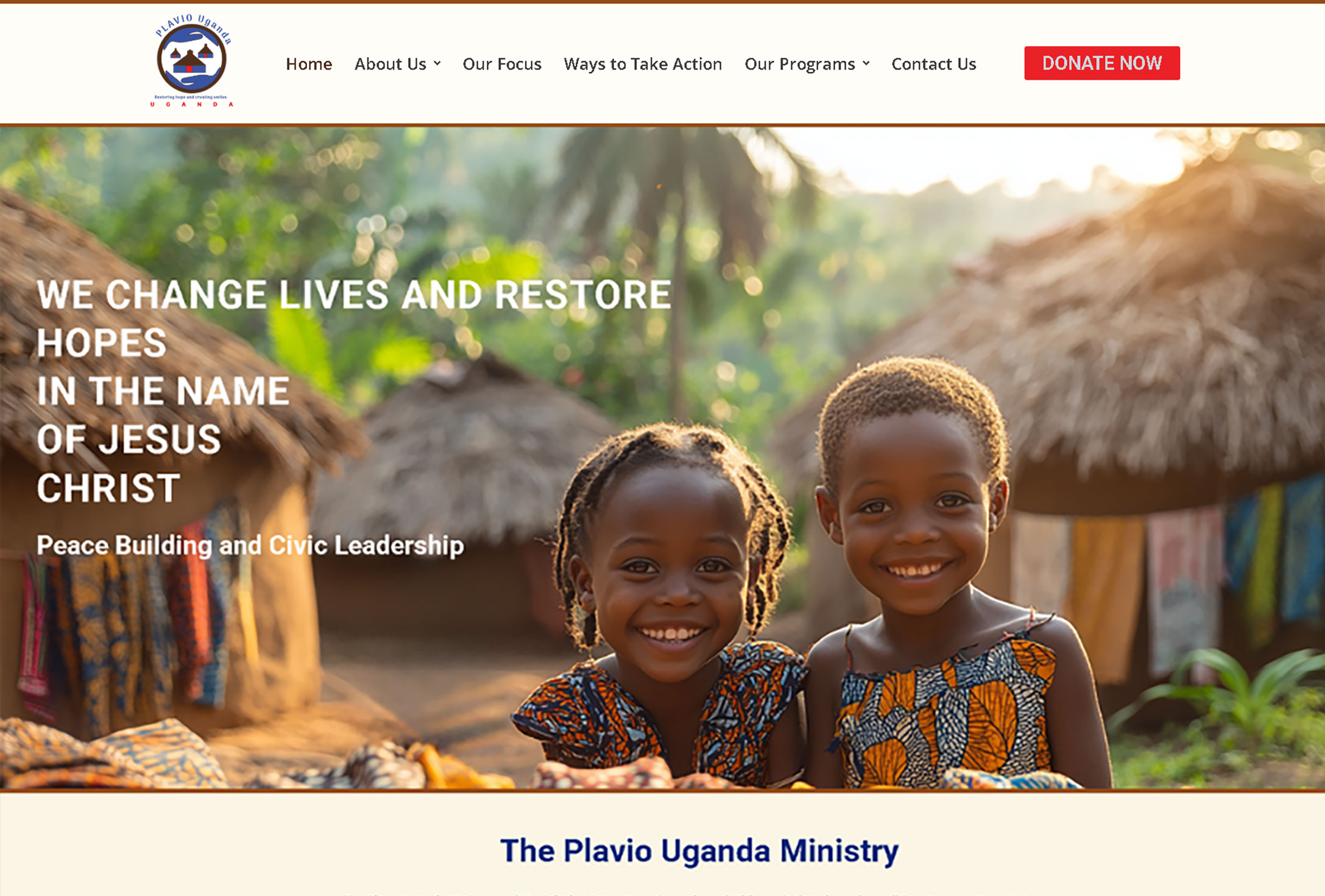
2024
Duration 2 weeks
(Design, Research, Owner Feedback)
HoneOkello Augustine Kezzy-Founder
NGO Uganda Africa
Plavio Uganda is a Christian NGO based in Lira City, Uganda, dedicated to transforming lives through spiritual growth, education, economic empowerment, gender equality, climate resilience, and community development. With programs that span everything from vocational training for women to psychosocial support for the elderly and discipleship projects grounded in storytelling, Plavio’s work impacts thousands across Northern Uganda.
As a volunteer UX/UI designer, I redesigned their website using Figma with a clear mission: to build a platform that reflects the heart of the organization while making their work accessible to donors, partners, volunteers, and local beneficiaries.
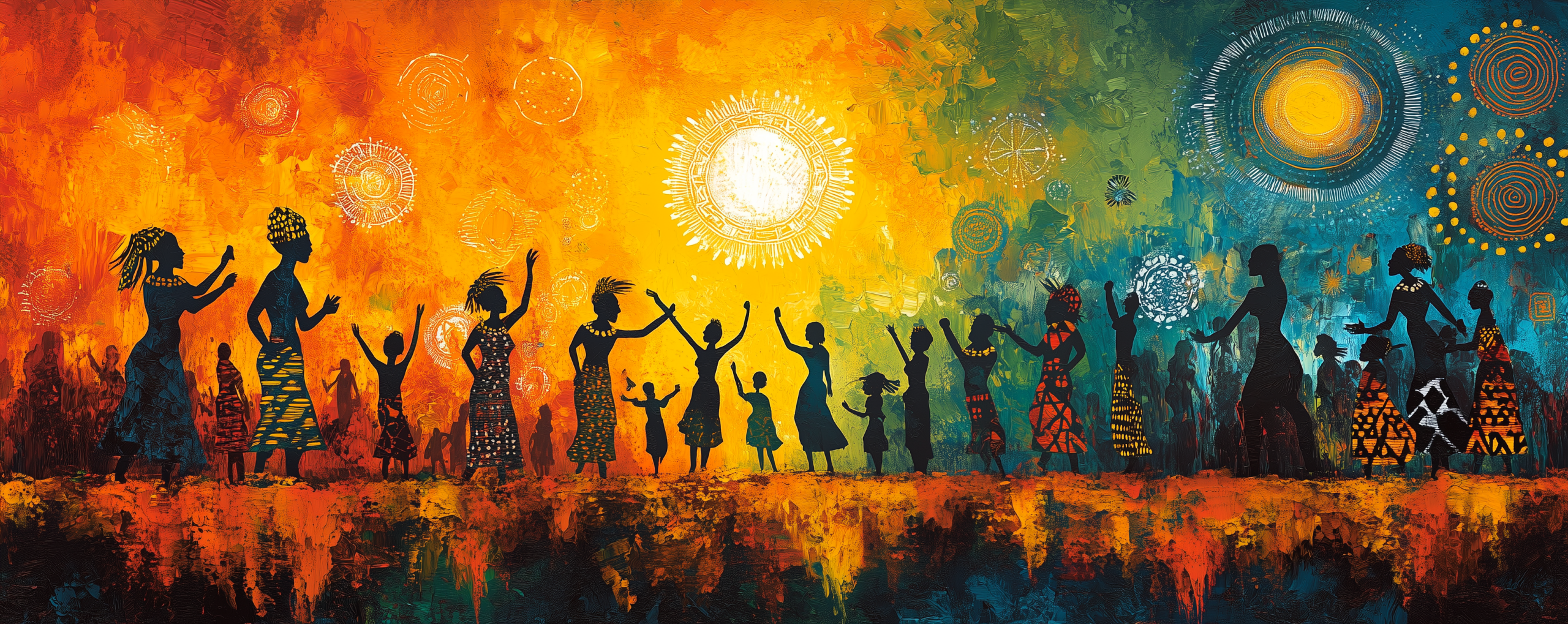
 This was a self-initiated volunteer project, and my responsibilities covered the full scope of the design process:
This was a self-initiated volunteer project, and my responsibilities covered the full scope of the design process:
I collaborated remotely with the NGO’s leadership, making design choices that honor both the organization’s faith-driven mission and its diverse audience.
As a designer passionate about social impact and storytelling, I saw in Plavio Uganda a powerful mission rooted in compassion, dignity, and resilience. I chose to volunteer because:
This was a self-initiated volunteer project, and my responsibilities covered the full scope of the design process:
I collaborated remotely with the NGO’s leadership, making design choices that honor both the organization’s faith-driven mission and its diverse audience.
As a designer passionate about social impact and storytelling, I saw in Plavio Uganda a powerful mission rooted in compassion, dignity, and resilience. I chose to volunteer because:

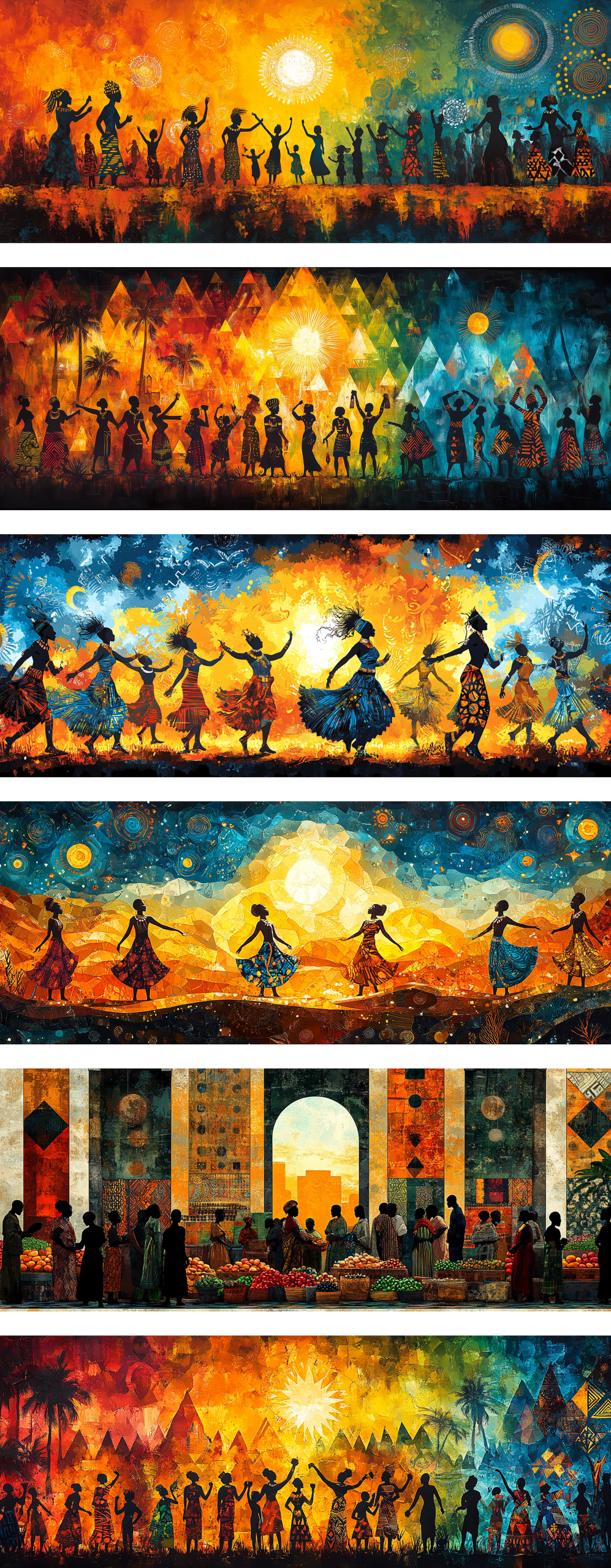 Plavio’s old website had valuable information but lacked coherence, structure, and modern appeal. Key challenges included:
Plavio’s old website had valuable information but lacked coherence, structure, and modern appeal. Key challenges included:
My challenge was to create a visual language and user journey that felt both professional and approachable, deeply rooted in African identity and spiritual purpose.
As part of the visual revitalization, I recognized that Plavio Uganda’s existing photo assets didn’t fully capture the spiritual and cultural vibrance of their mission. To enhance the emotional tone of the site and bridge visual gaps where photography was limited, I generated a suite of bespoke illustrations using Leonardo AI.

Plavio’s old website had valuable information but lacked coherence, structure, and modern appeal. Key challenges included:
My challenge was to create a visual language and user journey that felt both professional and approachable, deeply rooted in African identity and spiritual purpose.
As part of the visual revitalization, I recognized that Plavio Uganda’s existing photo assets didn’t fully capture the spiritual and cultural vibrance of their mission. To enhance the emotional tone of the site and bridge visual gaps where photography was limited, I generated a suite of bespoke illustrations using Leonardo AI.
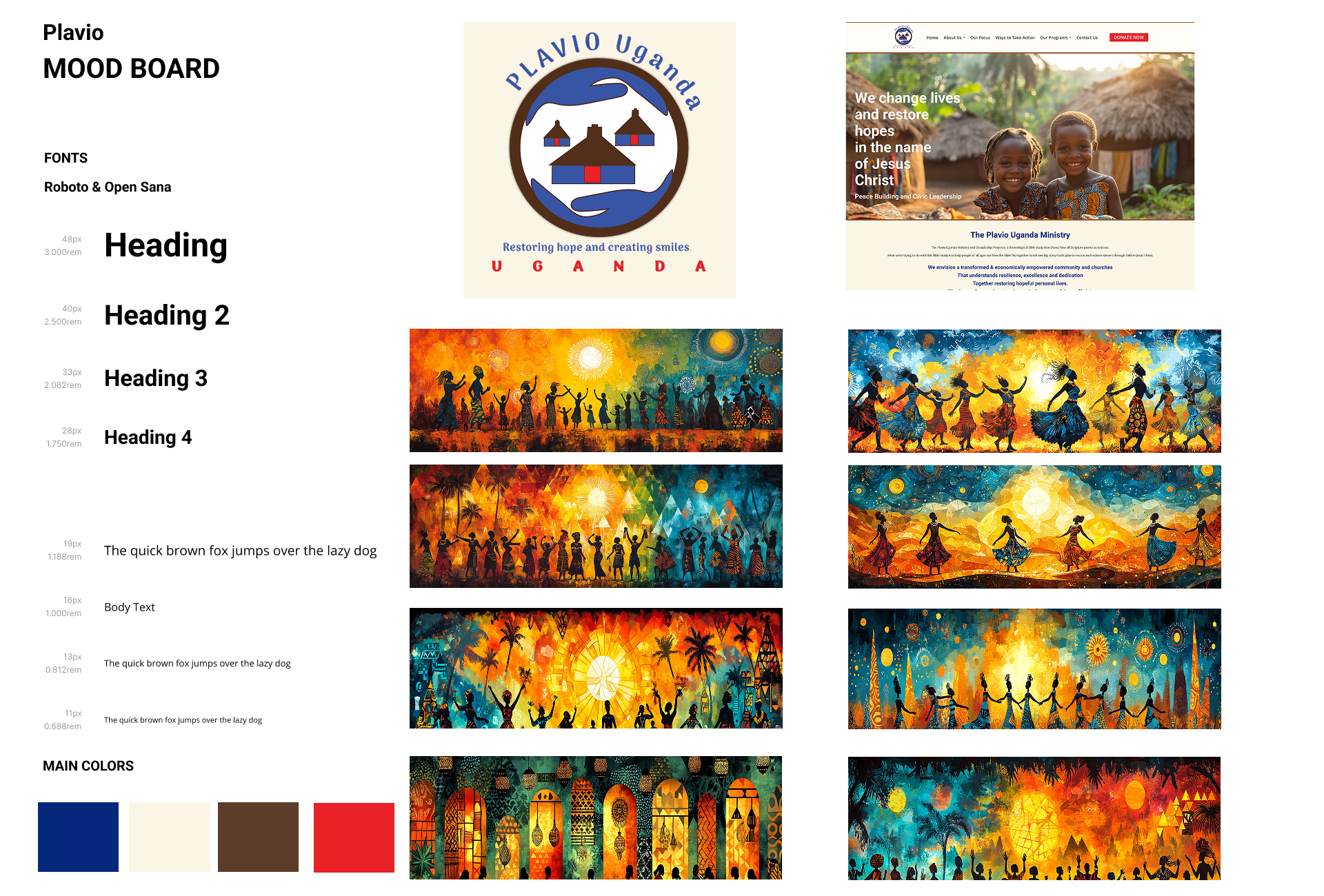
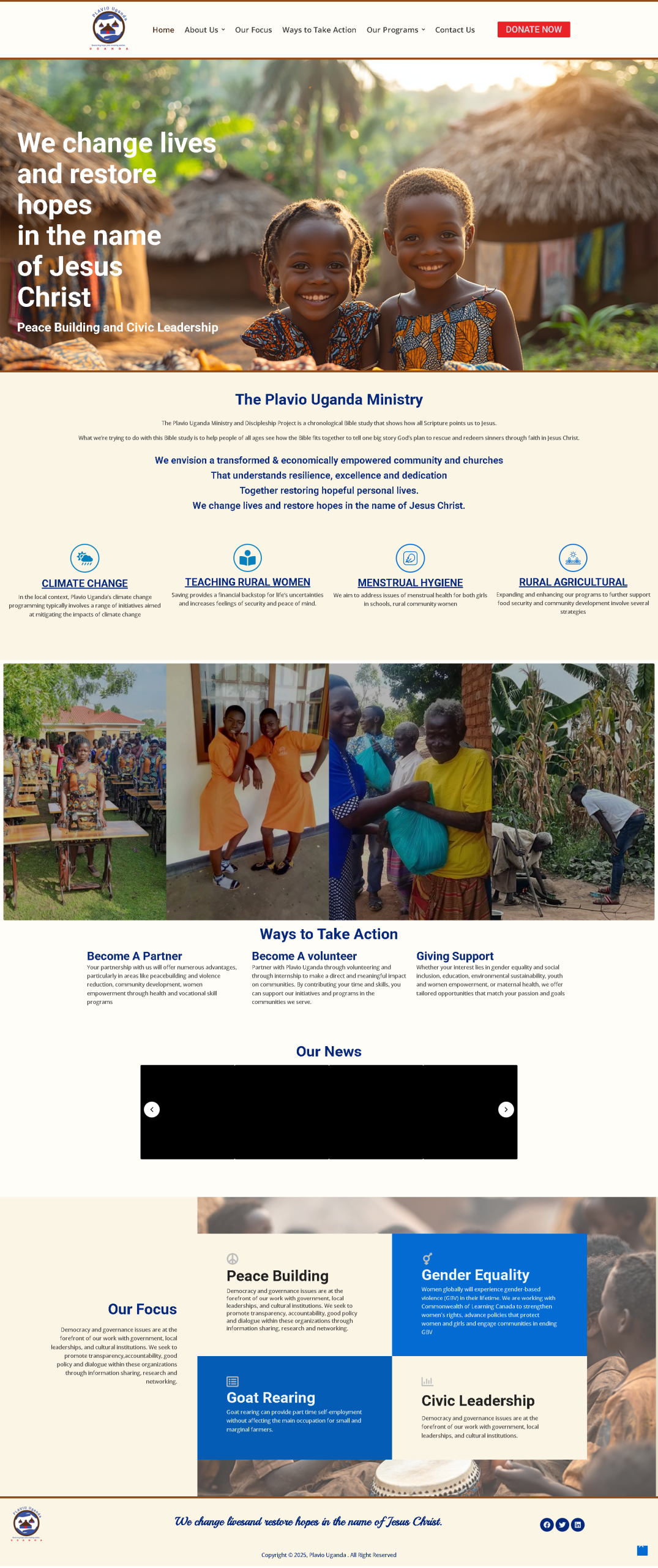
1. Discovery & Content Audit
I began by analyzing the original site, identifying pages with redundant content, gaps in storytelling, and unclear navigation. I also studied the NGO’s mission and values to ensure I translated their voice into design.
2. Information Architecture
I mapped out a new sitemap, grouping content under streamlined categories:
Each focus area was paired with icons and descriptive summaries to help users quickly find what interests them.
3. Wireframing
I created low-fidelity wireframes in Figma for all core pages. This phase helped align the structure with user needs and stakeholder goals before visual details were added.
4. Visual Design
Using a palette inspired by Ugandan earth tones and traditional prints, I built a system of cards, headings, and photo frames that feel warm and culturally rooted. Every section included visual content made in Leonardo AI to capture scenes of rural life, women-led workshops, and village resilience.
5. Collaboration & Feedback
I stayed in touch with the organization to validate layout decisions, and adapt the tone where necessary to reflect their Christian mission, especially on the Discipleship page.
6. Prototyping & Delivery
A clickable Figma prototype was delivered, along with image assets, typography guidelines, and suggestions for how to migrate the layout into WordPress or another CMS.

1. Discovery & Content Audit
I began by analyzing the original site, identifying pages with redundant content, gaps in storytelling, and unclear navigation. I also studied the NGO’s mission and values to ensure I translated their voice into design.
2. Information Architecture
I mapped out a new sitemap, grouping content under streamlined categories:
Each focus area was paired with icons and descriptive summaries to help users quickly find what interests them.
3. Wireframing
I created low-fidelity wireframes in Figma for all core pages. This phase helped align the structure with user needs and stakeholder goals before visual details were added.
4. Visual Design
Using a palette inspired by Ugandan earth tones and traditional prints, I built a system of cards, headings, and photo frames that feel warm and culturally rooted. Every section included visual content made in Leonardo AI to capture scenes of rural life, women-led workshops, and village resilience.
5. Collaboration & Feedback
I stayed in touch with the organization to validate layout decisions, and adapt the tone where necessary to reflect their Christian mission, especially on the Discipleship page.
6. Prototyping & Delivery
A clickable Figma prototype was delivered, along with image assets, typography guidelines, and suggestions for how to migrate the layout into WordPress or another CMS.





What made this redesign stand out was its alignment with the spirit of the NGO while delivering a modern, scalable, and emotionally resonant experience. Key reasons for its success:
